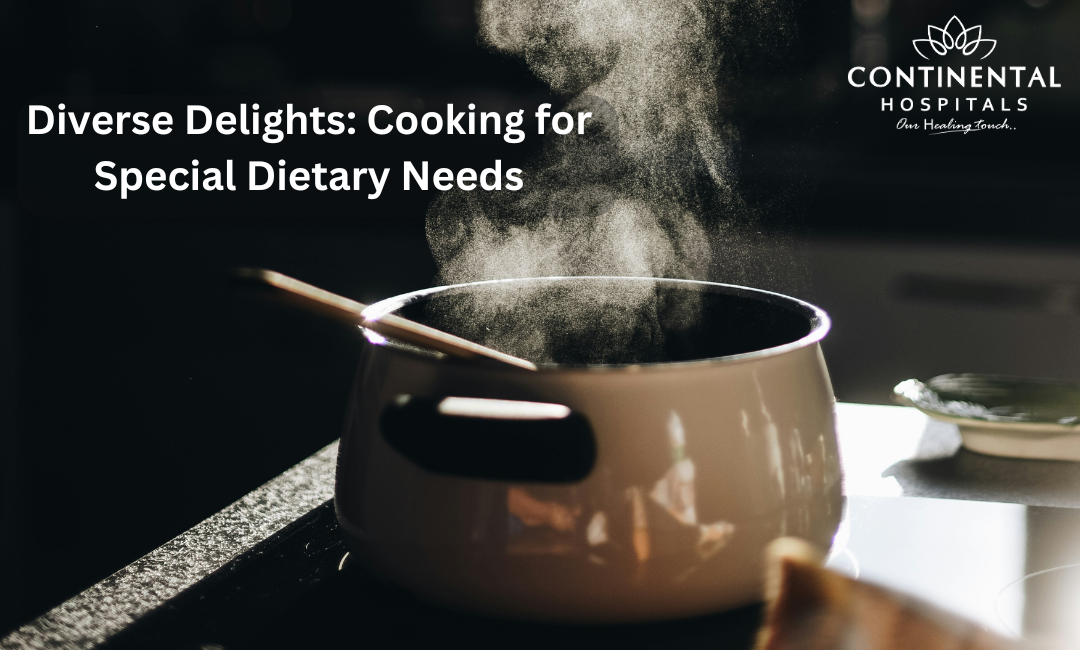In today's culinary landscape, the notion of "one size fits all" has given way to a celebration of diversity, especially when it comes to dietary preferences and restrictions. Whether due to medical conditions, ethical beliefs, or personal choices, individuals around the world are adopting specialized diets that cater to their unique needs. In this comprehensive guide, we embark on a journey through the realm of special dietary needs, exploring the rich tapestry of flavors, ingredients, and culinary techniques that make cooking for diverse palates a delightful and rewarding experience.
Understanding Special Dietary Needs
Understanding special dietary needs involves recognizing the wide spectrum of reasons behind individuals' dietary choices and restrictions. Some people adopt specialized diets due to medical conditions such as celiac disease, which necessitates a gluten-free diet to avoid inflammation and damage to the intestines. Others may follow dairy-free diets due to lactose intolerance or ethical considerations regarding animal welfare and environmental sustainability. Additionally, there are dietary preferences such as vegetarianism and veganism, driven by beliefs about the ethical treatment of animals and the environmental impact of animal agriculture. Understanding the nuances of these dietary needs requires empathy, education, and a commitment to inclusivity in both personal and professional culinary practices.
Furthermore, acknowledging the challenges and misconceptions surrounding special diets is essential for fostering a supportive and inclusive culinary environment. While some may perceive specialized diets as restrictive or burdensome, they actually offer a wealth of culinary opportunities and creative expression. By debunking myths and misconceptions and providing accurate information about dietary needs, we can create a culture of understanding and acceptance. Moreover, embracing diversity in dietary preferences encourages innovation in the kitchen, inspiring chefs and home cooks alike to explore new ingredients, flavors, and cooking techniques. Through education, advocacy, and a spirit of inclusivity, we can transform the way we approach special dietary needs, celebrating the richness and diversity of our culinary landscape.
Embracing Ingredient Diversity
🥗 Healthy Plate Challenge
🍽 Add Your Favorite Dish
Pick Your 6 favorite foods, eat, and see the results.Drag & drop foods onto your plate.
Drop Food Here
Embracing ingredient diversity is not only a necessity for accommodating special dietary needs but also a gateway to discovering an exciting array of flavors, textures, and culinary possibilities. Alternative ingredients such as almond flour, coconut milk, and nutritional yeast provide nutritious and delicious alternatives to traditional staples like wheat flour, dairy milk, and cheese. By incorporating these diverse ingredients into our cooking repertoire, we not only cater to specific dietary restrictions but also enhance the depth and complexity of our dishes, offering a sensory experience that appeals to all palates. Additionally, whole foods such as fruits, vegetables, grains, and legumes form the backbone of many specialized diets, offering a bounty of nutrients, fiber, and phytonutrients that contribute to overall health and vitality.
Moreover, embracing ingredient diversity encourages us to explore global cuisines and culinary traditions, discovering new ingredients, spices, and cooking techniques from around the world. Whether experimenting with Japanese miso paste, Indian spices like turmeric and garam masala, or Middle Eastern tahini and sumac, the possibilities for culinary exploration are endless. By celebrating the rich tapestry of ingredients and flavors that make up our global food heritage, we not only expand our culinary horizons but also cultivate a deeper appreciation for the interconnectedness of food, culture, and community. Embracing ingredient diversity is not just about accommodating dietary needs; it's about celebrating the vibrant mosaic of flavors and cultures that enrich our culinary experiences.
Mastering Culinary Techniques
Mastering culinary techniques tailored to special dietary needs is a journey of innovation and adaptation. Whether it's learning to bake without gluten, create creamy textures without dairy, or infuse umami flavors into plant-based dishes, specialized cooking methods require creativity and skill. For gluten-free baking, mastering the use of alternative flours like almond flour, coconut flour, and tapioca starch is essential for achieving the desired texture and structure in baked goods. Similarly, dairy-free cooking often involves exploring plant-based alternatives such as nut milks, coconut cream, and cashew cheese to replicate the richness and creaminess of dairy-based dishes. Additionally, incorporating umami-rich ingredients like mushrooms, miso, and nutritional yeast can add depth of flavor to plant-based meals, satisfying the palate and enhancing the overall dining experience.
Moreover, mastering culinary techniques for special dietary needs goes beyond simply substituting ingredients; it's about understanding the fundamentals of flavor balance, texture, and presentation. Experimenting with different cooking methods such as roasting, steaming, and sautéing allows for versatility and creativity in the kitchen. Additionally, honing skills in meal planning, batch cooking, and kitchen organization can streamline the cooking process and make it more efficient and enjoyable. By mastering these culinary techniques, chefs and home cooks alike can create delicious, satisfying meals that cater to a variety of dietary preferences and restrictions, while still delighting the senses and nourishing the body.
Navigating Social Situations and Dining Out
Navigating social situations and dining out while adhering to special dietary needs requires communication, preparation, and a proactive approach. When attending social gatherings or family events, it's helpful to communicate dietary restrictions or preferences with the host in advance. This allows for accommodations to be made, such as offering alternative dishes or ingredients that align with your dietary needs. Additionally, bringing a dish to share that fits within your dietary requirements ensures that you have something to enjoy while also introducing others to delicious and inclusive options. During restaurant outings, researching menus ahead of time and calling ahead to inquire about ingredient substitutions or modifications can help ensure a positive dining experience. Many restaurants are becoming increasingly accommodating to special diets, offering clearly labeled options or even customizable dishes to cater to a variety of dietary preferences.
Hosting inclusive gatherings and potlucks can also create a welcoming environment where guests of all dietary backgrounds feel valued and respected. Encouraging guests to share their dietary needs or preferences in advance can help ensure that there are ample options available for everyone to enjoy. Providing a variety of dishes, including vegetarian, vegan, gluten-free, and dairy-free options, ensures that all guests can find something delicious to indulge in. Additionally, offering alternative ingredients or serving dishes family-style allows guests to customize their plates according to their dietary preferences. By fostering open communication and a spirit of inclusivity, social gatherings and dining out experiences can become enjoyable opportunities to connect with others while honoring individual dietary needs and preferences.
Conclusion:
In a world as diverse as ours, embracing special dietary needs is not only a culinary adventure but also a celebration of inclusivity, empathy, and respect for individual preferences and beliefs. By understanding the nuances of different diets, exploring a wide array of ingredients and flavors, mastering versatile cooking techniques, and fostering a culture of acceptance and accommodation, we can create a world where everyone can enjoy delicious, nourishing meals that cater to their unique needs. Join us on this journey of culinary exploration and discovery, and let's celebrate the diverse delights of cooking for special dietary needs together.
Related Blog Article:
1. Unveiling the Hidden Risks of Processed Food Consumption
2. Plant-Based vs. Animal-Based Nutrition
3. Green tea for weight loss: Does it work?
4. Understanding Electrolytes: Key Players in Summer Hydration
5. Healthy Habits for Weight Management
.webp)














